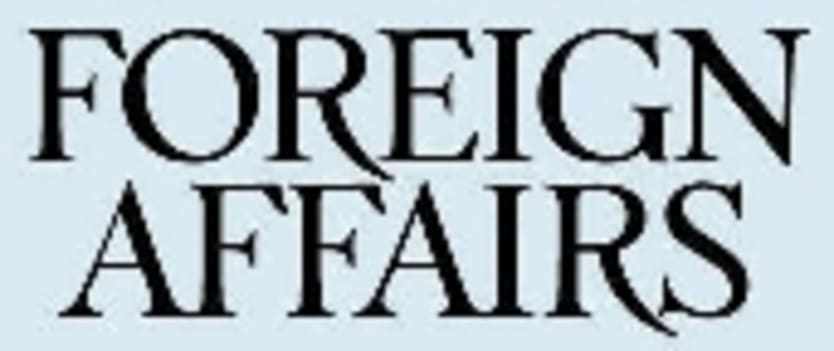
EDITOR'S NOTE: Building a healthier U.S.-Russia relationship requires strategic vision, writes Robert Legvold, director of the project Rethinking U.S. Policy Toward Russia at the American Academy of Arts and Sciences, and Marshall D. Shulman professor emeritus at Columbia University. For his full essay, please visit the Foreign Affairs magazine's Web site. A few excerpts:
Reversing the collapse of U.S.-Russian relations is one of the great tests facing the Obama administration. Among the major powers, Russia is the hard case. And the stakes involved in getting U.S.-Russian relations right are high - much higher than the leadership of either country has acknowledged or perhaps even realized so far. If the Obama administration can guide the relationship onto a more productive path, as it is trying to do, it will not only open the way for progress on the day's critical issues - from nuclear security and energy security to climate change and peaceful change in the post-Soviet area - but also be taking on a truly historic task. One of the blessings of the post - Cold War era has been the absence of strategic rivalry among great powers, a core dynamic of the previous 300 years in the history of international relations. Should it return, some combination of tensions between the United States, Russia, and China would likely be at its core. Ensuring that this does not happen constitutes the less noticed but more fateful foreign policy challenge facing this U.S. president and the next.
Other issues are also critical but not always recognized as such. Making real progress toward coping with climate change, including during negotiations at the 2009 UN Conference on Climate Change, will depend on whether the three countries that emit 45 percent of the world's greenhouse gases - the United States, Russia, and China - can cooperate. Any effort to mitigate trafficking in humans, small arms, drugs, endangered species, counterfeit goods, and laundered money must focus on Russia, since these often come from or through that country. Blocking cyberattacks, keeping space safe for commerce and communications, and averting the return of the kind of military air surveillance common during the Cold War will involve Russia, first and foremost. And attempts to reform international financial and security institutions will be optimized only if Russia is given a chance to contribute constructively.
If the United States' interests in a relationship with Russia are this many and this great and if, as Undersecretary of State William Burns said of Washington and Moscow in April, "more unites us than divides us," then the Obama administration will need to turn a page, and not simply tinker at the edges, as it redesigns U.S. policy toward Russia. Turning a page means setting far more ambitious goals for the relationship than is currently fashionable and then consciously devising a strategy to reach them. It also means integrating the well-intentioned symbolic gestures Washington has made toward Russia recently, as well as progress on concrete issues, such as arms control, Iran's nuclear program, and Afghanistan, into a larger design.
Ready, set, reset
So far, the Obama administration's steps toward a healthier relationship with Russia have been earnest but cautious, consistent with the president's deliberate approach to major policy choices. First, Obama altered the tone of the relationship: hence, Vice President Joe Biden's metaphor about hitting the reset button, the recasting of Washington's position on Iran's nuclear program and Washington's attempt to link the issue to its decision to place a ballistic missile defense system in central Europe, an apparent readiness to repeal the Jackson-Vanik amendment (which still denies Russia most-favored-nation status because of Sovietera restrictions on Jewish emigration, which were lifted long ago), and the businesslike bonhomie of Obama's first meeting with Medvedev. In short order, Washington then set about addressing concrete and urgent issues: drafting a successor agreement to start i, which expires in December; intensifying the dialogue between Washington and Moscow over the Iranian nuclear threat; and exploring closer cooperation on Afghanistan.
A second option assumes that despite some important areas of potential cooperation, various impediments make a genuine partnership an illusion. Russia's readiness to contest many aspects of U.S. foreign policy and its indifference to values that Americans consider important create a fundamental barrier. According to this view, the best strategy combines selective engagement with selective containment and calibrates the two in ways that enhance engagement while softening the edges of containment. U.S. policy has more or less evolved in this direction over the last several years, albeit without a well-formulated design, and much of the U.S. political establishment and the U.S. media seem to have endorsed it.
The third approach is more ambitious. A rush of recent commission reports, studies, and essays by Russia specialists - Anders Åslund, Thomas Graham, Andrew Kuchins, and Steven Pifer, among others - have argued that the relationship should be put on a distinctly different footing. They note that Russia is not the entity it was in the 1990s (no longer prostrate and struggling to be like the West, let alone part of it) and neither is the world (no longer dominated by a United States that could tackle scattered secondary security threats with just a little help from a few friends). Much of this work recognizes the difficulties of dealing with Russia's edgy and assertive leaders but maintains that the U.S.-Russian agenda is too important to be delayed until after Washington's doubts and frustrations have been eased. And it contends that engagement, even reconciliation, is possible with Moscow on a wide range of issues - if with considerable effort.
However, moving in this direction, as Obama and his Russian policy team appear tempted to do, requires a strategic vision, and they have not yet begun to formulate one. Rather than simply tackle practical problems and hope that incremental progress on those will eventually produce a different kind of U.S.-Russian relationship, the administration needs to develop a clear and coherent image of where it wants the relationship to be four to six years from now - not a rose-colored image but a set of plausible aspirations by which to orient and discipline day-to-day policy. And then it should think carefully about what is required to get there.
Far and wide
Ultimately, in order for the U.S.-Russian relationship to move forward on a fundamentally different footing, something far more innovative will be needed. If the Obama administration hopes to overcome the bickering that surrounds nearly every issue on the current agenda and reduce the poisonous suspicion with which Moscow regularly greets U.S. initiatives, let alone transform the relationship into a strategic partnership, it must strive sooner rather than later to establish a deep and far-reaching dialogue with Moscow.
A fresh start
The time is right for Obama to share with his administration, the American people, and an intensely interested Russian audience his strategic vision for U.S.-Russian relations and where he would like these to be several years from now. He should then invite the Russian side to join in a frank, wide-ranging discussion of how to get there. As the president readies himself for his first fullscale summit with his Russian counterpart this summer, and as the two countries strain to prove that they can succeed with the agenda they set last April, he has a chance to end a friction-ridden and barren decade in U.S.-Russian relations and help set the two countries on a far more promising road.








